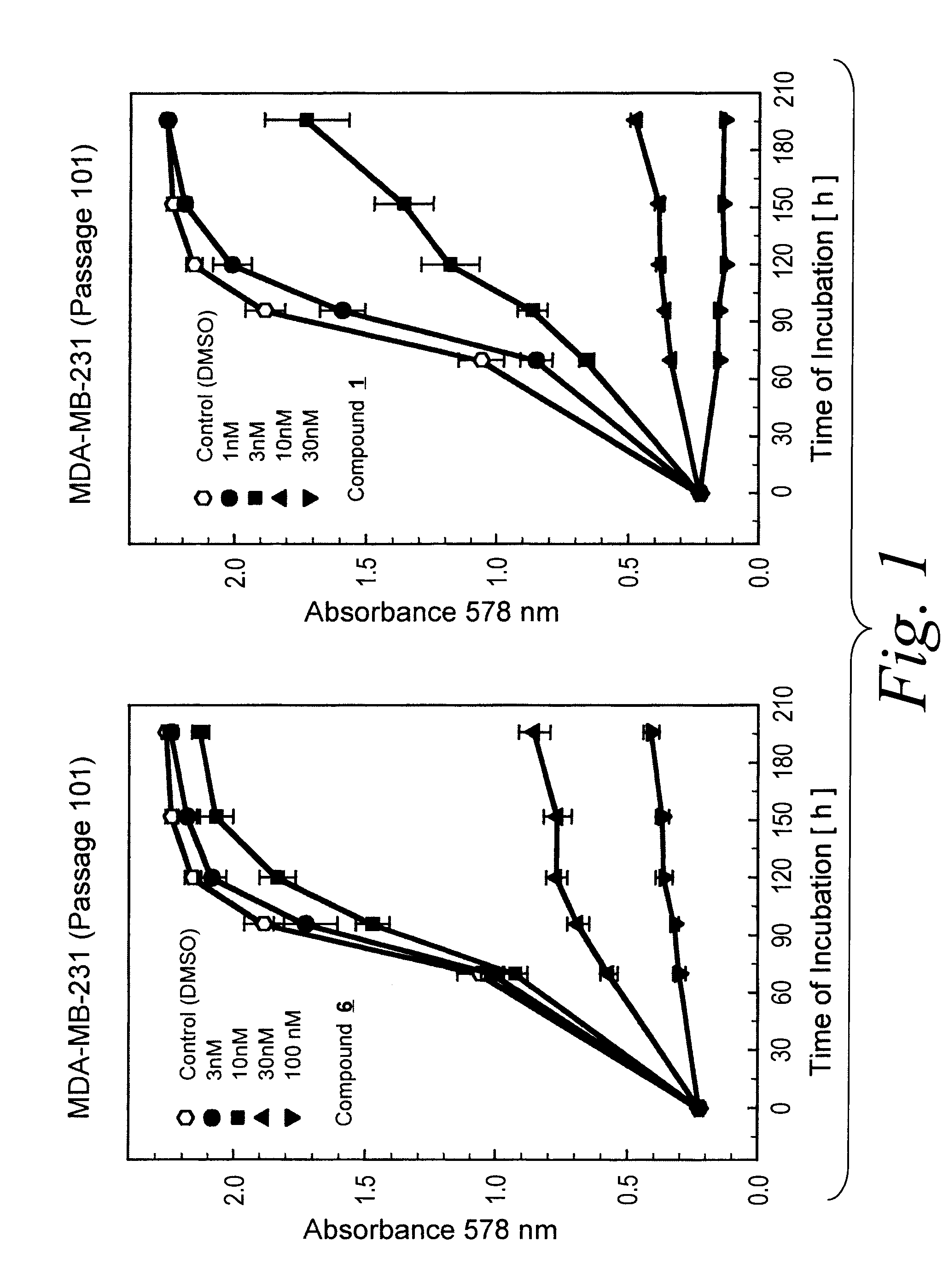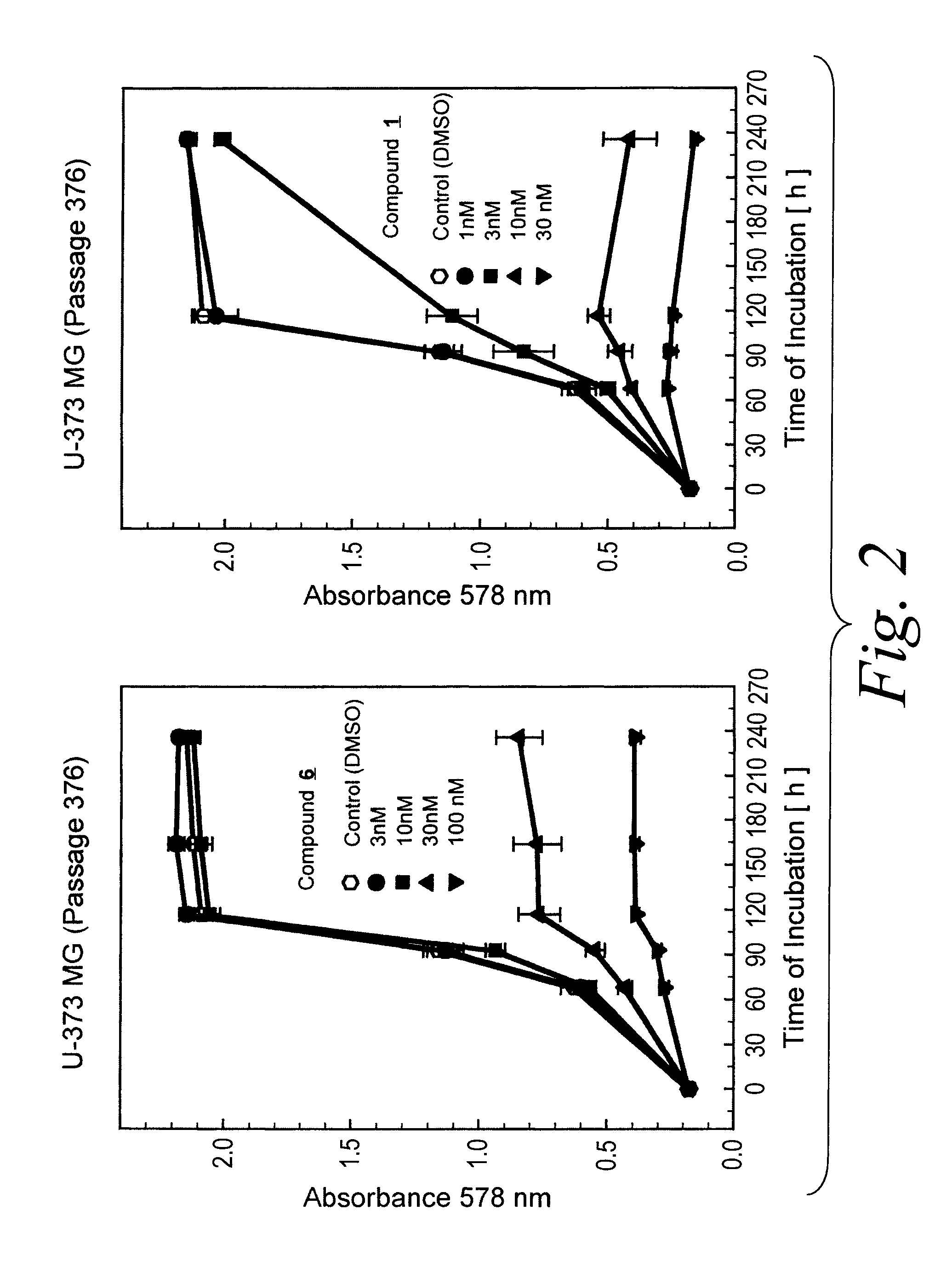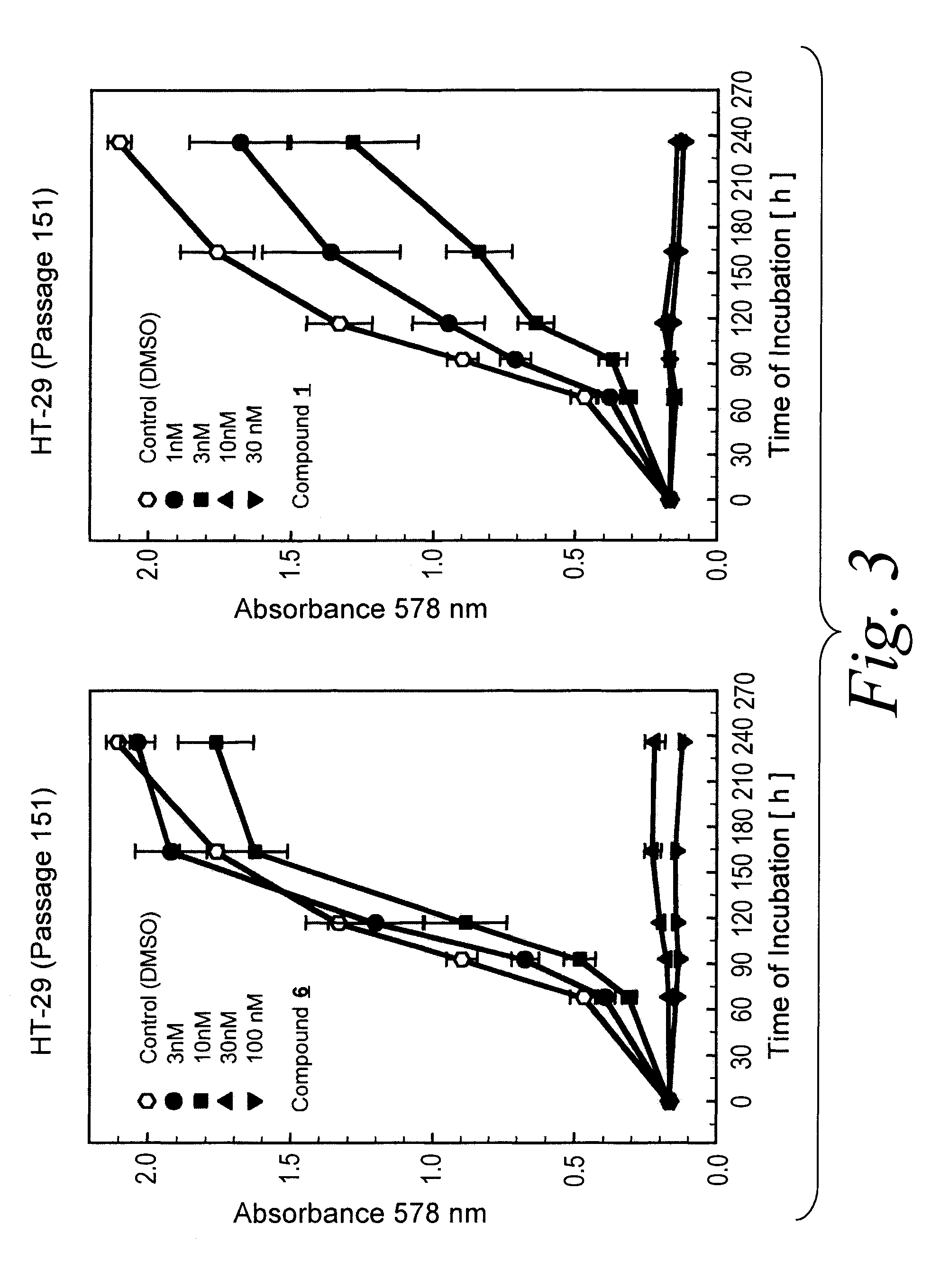Compositions and methods for the treatment of cancer
a cancer and composition technology, applied in the field of compositions and methods for the treatment of cancer, can solve the problems of toxic inhibition of the erk-pathway, undermining the beneficial physiological response of a pathological, and surprising limitations of the efficacy of highly specific inhibitors of mek1/2 and thereby erk2, etc., to inhibit abnormal cell growth, inhibit growth-related kinase pathways, and inhibit abnormal cell growth
- Summary
- Abstract
- Description
- Claims
- Application Information
AI Technical Summary
Benefits of technology
Problems solved by technology
Method used
Image
Examples
example 1
Conversion of 6 into Compound 1
[0267]
[0268]Compound 6, possessing an absolute configuration analogous to natural K252a [Fredenhagen and Peter, Tetrahedron 52, 1235-1238 (1996)], was prepared according to WO97 / 05140 as a methylene chloride adduct (86% in 6). A mixture of 60.5 mg (0.112 mmole) of 6 and 15 mg KCN were placed into a pressure flask, which 5 ml methyl amine were condensed into at −78° C. The mixture was dissolved by warming up to room temperature and was stirred for 110 hrs under exclusion of light, whereafter according to TLC (silica gel, methylene chloride / methanol 95:5) the starting material (Rf=0.28) had been completely converted into the product 1 (Rf=0.25). The solvent was allowed to evaporate, and the colorless solid residue was chromatographed on a 1.5×20 cm silica gel column with methylene chloride / methanol 96:4 as eluent. After evaporation of the solvent 49 mg (81%) of >99.5% (1H-NMR) pure 1 was obtained.
[0269]1H-NMR (300 MHz, DMSO-d6): ∂=1.95 (1H, dd, furanosid...
example 2
Conversion of 6 into Compound 2
[0270]
[0271]56 mg (0.103 mmole) of the solvate of 6 (86%) with methylene chloride was dissolved in 5 ml dioxane and placed into a Teflon lined pressure bomb. 5 ml of anhydrous ammonia was condensed into the vessel at −78° C. The mixture was heated in the pressure bomb under stirring to 100° C. for 24 hrs. Ammonia was allowed to evaporate slowly at room temperature, and the remaining deep yellow was solution was evaporated in vacuo to dryness. The resulting yellow solid was resuspended in a few ml methylene chloride / methanol 9:1. Undissolved material was removed by filtration, and the resulting solution was filtered through a short silica gel column with some more methylene chloride / methanol 9:1. The filtrate was evaporated in vacuo to yield 27 mg of yellow crude product, which was further purified by flash chromatography on a 1.5×20 cm silica gel column with methylene chloride / methanol 95:5 as eluent. After evaporation of the fractions containing pure ...
example 3
Long-Term Growth Inhibition of MDA-MB-231 Human Breast Cancer Cells
[0273]The human estrogen receptor and EGF receptor negative MDA-MB-231 (HTB 26) breast cancer cell line (obtained from ATCC, Rockville, USA) were cultured in McCoy's 5A medium containing L-glutamine, 2.2 g / l NaHCO3 and 5% fetal calf serum. Cells were maintained in a water saturated atmosphere (95% air / 5% carbon dioxide) at 37° C. in 75-cm2 culture flasks, and were serially passaged following trypsinization using 0.05% trypsin / 0.02% EDTA.
[0274]For proliferation assays tumor cell suspensions (100 μl / well) were seeded into 96-well flat bottomed microtitration plates at a density of ca. 15 cells / microscopic field (magnification 320×). After 2-3 days the culture medium was removed by suction and replaced by fresh medium (200 μl / well) containing varying concentrations of the compound of the formula 1 or vehicle (0.5% DMSO). Compound 1 was added as 1000-fold concentrated feed solutions. On every plate 16 wells served as con...
PUM
| Property | Measurement | Unit |
|---|---|---|
| volume | aaaaa | aaaaa |
| diameter | aaaaa | aaaaa |
| temperature | aaaaa | aaaaa |
Abstract
Description
Claims
Application Information
 Login to View More
Login to View More - R&D
- Intellectual Property
- Life Sciences
- Materials
- Tech Scout
- Unparalleled Data Quality
- Higher Quality Content
- 60% Fewer Hallucinations
Browse by: Latest US Patents, China's latest patents, Technical Efficacy Thesaurus, Application Domain, Technology Topic, Popular Technical Reports.
© 2025 PatSnap. All rights reserved.Legal|Privacy policy|Modern Slavery Act Transparency Statement|Sitemap|About US| Contact US: help@patsnap.com



